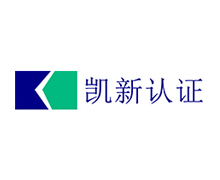

If you have any consultation or questions about technical services,
Please call the hotline
4006161189
Or inquire on the phone:
8610-65512190
8610-65531799
Mail box:
Helen@kcb-china.com
Liuyue@kcb-china.com
Asset management system certification
Certification introduction:
The ISO 55001 series of standards is the first management system standard issued by the international standardization organization (ISO). The asset management system aims to maximize the value of the organization's assets. Determine the organization's policy and strategic asset management plan according to the analysis of the internal and external environment of the organization; Determine the asset management objectives on the basis of risk identification and balance the risk, cost and performance of the asset throughout its life cycle; Making asset management decisions; To provide resources to implement the asset management plan by formulating the asset management plan; To inspect the implementation of the asset management plan and the completion of the target; Implementation of internal audit and management review and inspection system conformity and effectiveness; The policy and strategic asset management plan are revised according to the change of internal and external conditions, and a new cycle is started to create greater value for the realization of organizational goals. Asset management system certification is applicable to all types of assets and organizations of all types and sizes.
Through effective operation of the asset management system and certification, it can help the organization:
A) improve financial performance: improve investment returns and reduce costs while maintaining asset value without deviating from short-term or long-term organizational goals.
B) provide information for asset investment decisions: help organizations improve their decisions and effectively balance costs, risks, opportunities and performance.
C) risk management: to reduce the financial loss, improve occupational health and safety, goodwill and reputation, will be to minimize negative environmental and social impacts, eventually reduce liabilities (e.g., insurance premium, fines and penalties, etc.).
D) to show social responsibility and commitment: improve organization in energy conservation and emissions reduction, ability to cope with climate change, etc, show the social sense of responsibility and integrity management model, consciously abide by and comply with various regulatory requirements of asset management standards, policies and processes, to show commitment of the organization.
E) improving organizational sustainability: effective management of long-term and short-term benefits, costs and performance is conducive to improving the sustainability of organizational operation. Improve efficiency and effectiveness: review and improve process, process, and asset performance to improve efficiency and effectiveness and achieve organizational goals.
Scope:
Asset management system certification is applicable to all types of assets and organizations of all types and sizes. This is crucial for some asset-intensive industries. It is directly related to the continuity of production and service, product and service quality, cost, personnel safety and environmental impact. For example:
1) public institutions, such as water supply, power supply, gas supply and sewage treatment
2) petrochemical industry
3) transportation industry, railway, aviation, sea transportation, subway, bus, transportation company, etc
4) power generation industry
5) communication industry
6) high-end equipment manufacturing industry
技术支持:北京网站建设  原创先锋
原创先锋